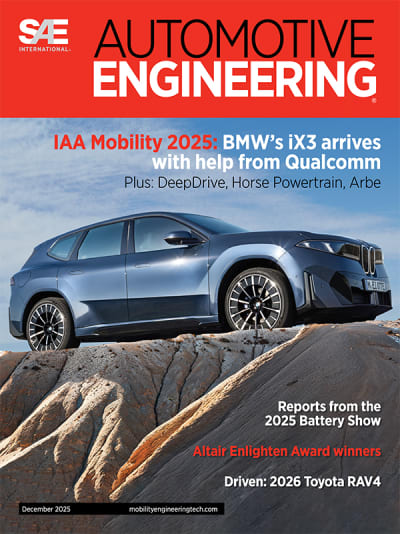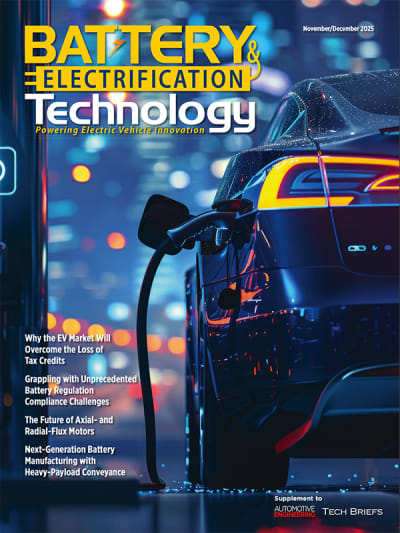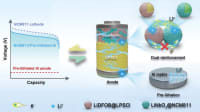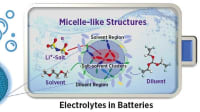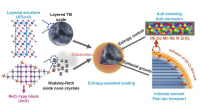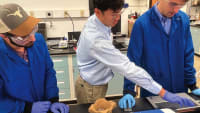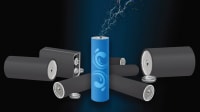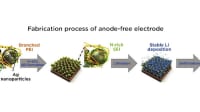A Path to Safer, High-Energy Electric Vehicle Batteries
Nickel’s role in the future of electric vehicle batteries is clear: It’s more abundant and easier to obtain than widely used cobalt, and its higher energy density means longer driving distances between charges.
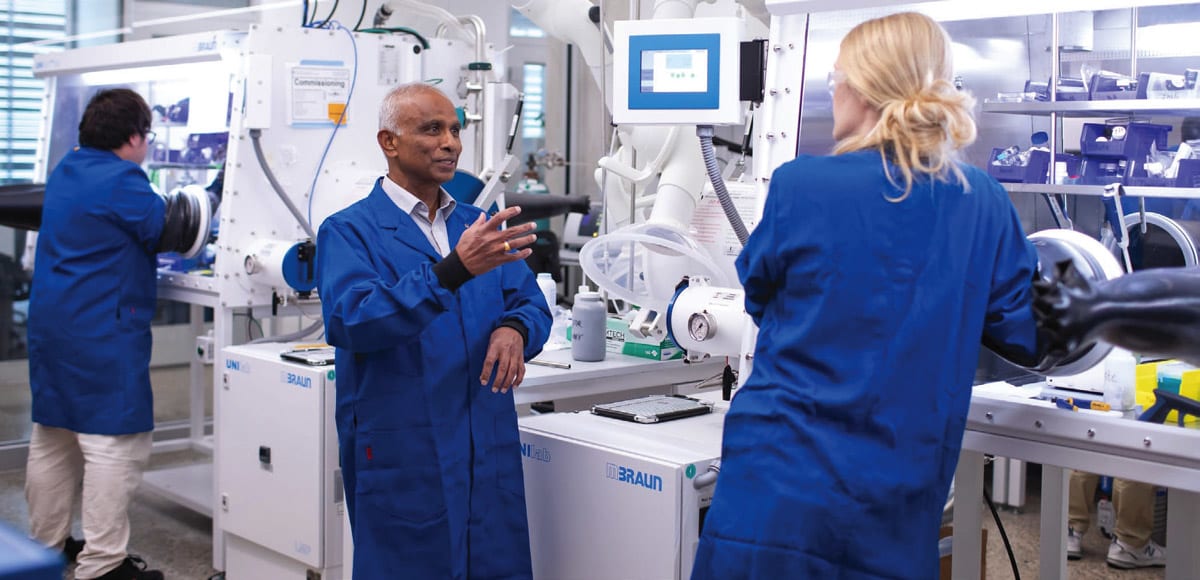
Nickel’s role in the future of electric vehicle batteries is clear: It’s more abundant and easier to obtain than widely used cobalt, and its higher energy density means longer driving distances between charges. However, nickel is less stable than other materials with respect to cycle life, thermal stability, and safety. Researchers from The University of Texas at Austin and Argonne National Laboratory aim to change that with a new study that dives deep into nickel-based cathodes, one of the two electrodes that facilitate energy storage in batteries.
“High-nickel cathodes have the potential to revolutionize the EV market by providing longer driving ranges,” said Arumugam Manthiram, a professor at the Walker Department of Mechanical Engineering and Texas Materials Institute and one of the leaders of the study published in Nature Energy. “Our study provides a comprehensive analysis of their thermal stability, which is crucial for developing safer batteries.”
The research team conducted more than 500 measurements on 15 high-nickel cathode materials. They discovered that each cathode has a critical state of charge that defines its safe operating limit. The strength of metal-oxygen bonds and surface reactivity influence this crucial state. Once the material exceeds this limit, instability creeps in. That can trigger the catastrophic condition of thermal runaway, when increased temperature releases energy that further heats the battery, substantially increasing the risk of failure and/or fires.
As part of this project, the researchers developed a thermal stability index, quantifying how the material reacts during thermal runaway. Factors influencing cathode thermal stability include: cathode composition, surface chemistry, nickel content, and crystal size.
This research has far-reaching implications, offering a path to safer, more efficient batteries that can support the growing demand for electric vehicles. As the world moves towards cleaner energy solutions, these advancements are crucial for making EVs more viable and attractive for consumers. “Our work provides a roadmap for the industry to follow, ensuring that the high energy density of these cathodes does not come at the cost of safety,” said Zehao Cui, a research associate in Manthiram’s group.
The researchers will continue their work on thermal stability and cathodes. Up next, they will bring electrolytes into the equation. Electrolytes are the chemical components, often liquid-based, that shuttle the charge-carrying ions back and forth. They enable the battery’s charge and discharge functionality, and ensuring reliable interactions between electrolytes and cathodes is critical to improving battery safety.
For more information, visit here .
Top Stories
INSIDERDefense
![]() New 3D-Printable Nanocomposite Prevents Overheating in Military Electronics
New 3D-Printable Nanocomposite Prevents Overheating in Military Electronics
Technology ReportSoftware
![]() Talking SDVs and Zonal Architecture with TE Connectivity
Talking SDVs and Zonal Architecture with TE Connectivity
NewsDesign
![]() 2026 Nissan Sentra Review: Putting the Pieces Together
2026 Nissan Sentra Review: Putting the Pieces Together
INSIDERDesign
![]() New Defense Department Program Seeks 300,000 Drones From Industry by 2027
New Defense Department Program Seeks 300,000 Drones From Industry by 2027
INSIDERDefense
![]() Anduril Completes First Semi-Autonomous Flight of CCA Prototype
Anduril Completes First Semi-Autonomous Flight of CCA Prototype
INSIDERDefense
Webcasts
Transportation
![]() Hydrogen Engines Are Heating Up for Heavy Duty
Hydrogen Engines Are Heating Up for Heavy Duty
Manufacturing & Prototyping
![]() SAE Automotive Podcast: Solid-State Batteries
SAE Automotive Podcast: Solid-State Batteries
Manufacturing & Prototyping
![]() SAE Automotive Engineering Podcast: Additive Manufacturing
SAE Automotive Engineering Podcast: Additive Manufacturing
Defense
![]() A New Approach to Manufacturing Machine Connectivity for the Air Force
A New Approach to Manufacturing Machine Connectivity for the Air Force
Automotive
![]() Optimizing Production Processes with the Virtual Twin
Optimizing Production Processes with the Virtual Twin


